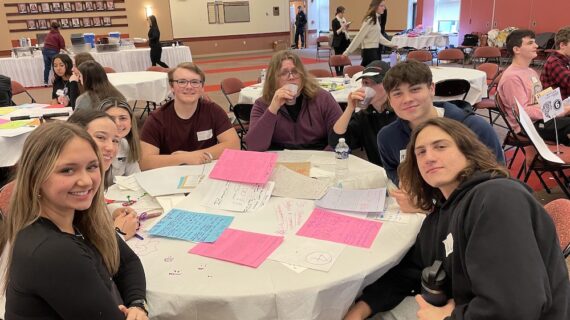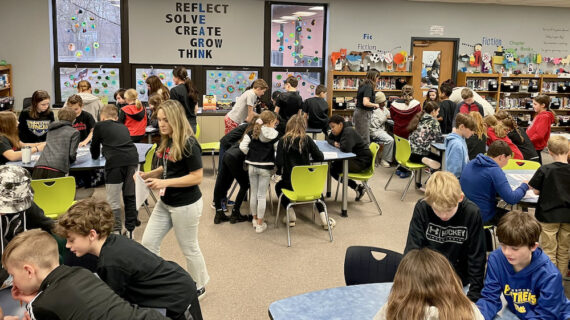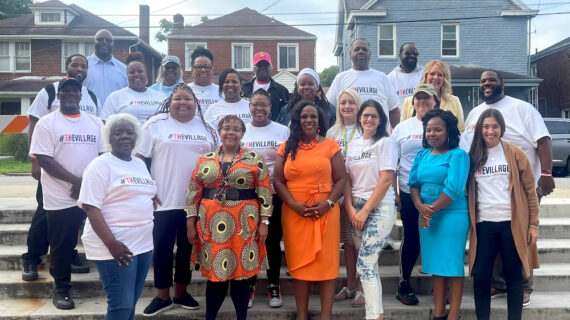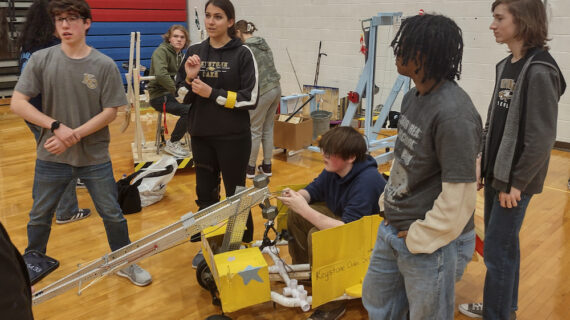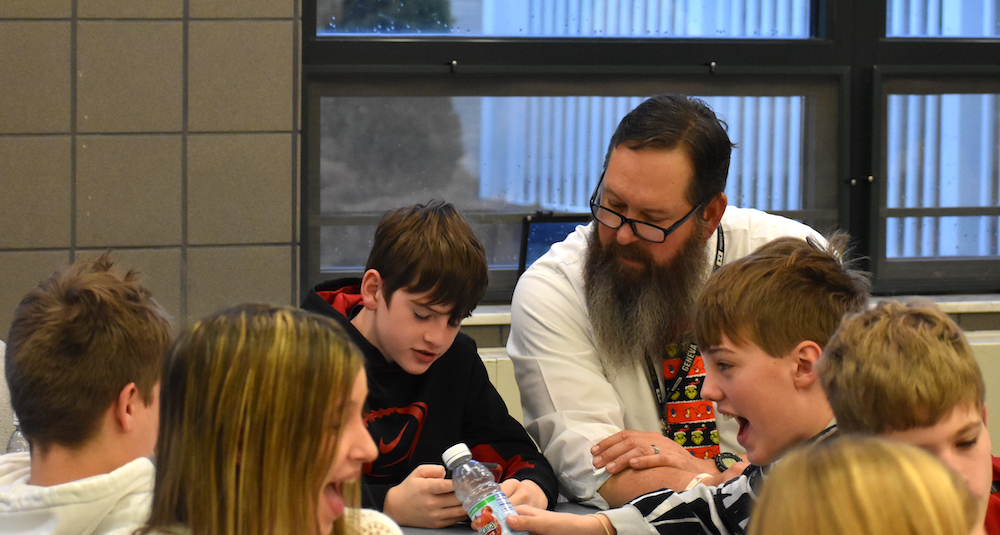
Growing up gets a little bit easier in the Allegheny Valley School District
This story is one in a series created in collaboration with the AASA Learning 2025 Alliance to celebrate the work of groundbreaking school districts in the Pittsburgh region. Kidsburgh will share these stories throughout 2024.
In American society, getting an education means comprehending academic concepts and being conversant in the subjects you’re studying. But it doesn’t end there. Increasingly, educators are finding ways to focus on the whole child — including emotional maturity and the ability to cope in the world.
This whole-child focus is at the heart of Allegheny Valley School District’s new project: reimagining the transition from elementary school to junior high so that kids can more easily navigate the opportunities and pitfalls that such a change can present.
Sixth graders “have essentially been isolated in the elementary school, which is a much different climate and culture,” says Superintendent Patrick Graczyk. “Then they’re moving into these buildings where people have facial hair and they’re really big and very confident. As a seventh and eighth grader, navigating that can be difficult.”
Not surprisingly, Allegheny Valley finds that behavioral problems can surface among seventh and eighth graders — “attention-seeking-type behaviors” that are a result of seismic transitions in the young students’ lives.
Schools must teach a huge amount of curriculum each year. But bubbling underneath it all is mental health and the need to build a sense of belonging — things that directly impact learning. If schools don’t address these issues, kids struggle to learn and thrive.
The answer, at Allegheny Valley, is this: Never lose sight of the fact that although these are students with academic goals, they are also people.
MANAGING THE KEY TRANSITION TO JUNIOR HIGH
Front and center in this effort is the district’s wellness room, created last year at the elementary school as a place where kids could feel safe, be mindful, and build coping skills. With this in place, the school can monitor — and better support — students.
But with the center’s success came a realization: More was needed. That, says elementary school principal Jennifer Vecchio, was the catalyst for an even bigger vision.
“We started seeing that bigger picture and realizing when we’re hearing students say, ‘People don’t quite get me’ or ‘People don’t understand’ or ‘I don’t feel that I belong all the time,’” Vecchio says. “And we’re saying, as adults, ‘Where do we go with this? How do we get the parents and the community involved to support the student and understand that this is really what they’re asking for?’”
One answer that’s been making a difference: Taking small, incremental steps with seventh and eighth graders to make them feel known and appreciated at the Springdale Jr.-Sr. High School.
Among the most popular are the special breakfasts. On a chosen morning, the entire seventh grade will sit down in the cafeteria for a breakfast meal with their teachers and the school’s leadership team.

“We share tables. We just sit and talk. We ask that everyone joins in with the kids and talks,” Graczyk says. And on another day, the eighth graders do the same thing. Both grades do it early in the school year, again just before the holidays, and again in the spring.
“It’s not talking about discipline or about grades. It’s simply about having conversations and chatting with students about what their interests are,” the superintendent says. “Just trying to have the kids view us as people and so that they know we view them as people.”
These are small things, but potent — particularly when kids are shifting from an environment full of small children to one that includes near-adults. The junior high students, not surprisingly, love the breakfasts. “They look forward to it every quarter,” says Danielle Britton, the district’s social worker.
“You look at kids today, what’s the first thing they do? They pick up their phone and they’re documenting every part of their life,” says Andrew Leviski, the principal at Springdale. “But during those breakfasts, we’ve watched the kids just sit and talk to each other. And that’s such an awesome thing to see.”
This whole-child mindset made the district a great fit for the Western Pennsylvania Learning 2025 Alliance, a regional cohort of school districts working together — with support from The Grable Foundation — to create student-centered, equity-focused, future-driven schools. Led by local superintendents and AASA, The School Superintendents Association, the Alliance convenes to help districts like Allegheny Valley do what they do best: help every child thrive.
Along with those joyful breakfasts, the school is actively involving seventh and eighth graders in pep rallies, which had typically been the purview of high school juniors and seniors. Junior high kids can also participate in the fall play and spring musical alongside high schoolers. And there’s now a teachers vs. kids volleyball tournament specifically for junior high — complete with some intense but good-natured pushback at the referee, a high school junior.
And here’s the kicker: This is fun, yes, but there’s something happening in the background. Attendance is improving, discipline referrals are down, and better behavior is on the rise.
“Can I say that it’s because of doing things like breakfasts? I don’t know,” Leviski says. “But we definitely have seen a decrease this year.”
Paying attention to the entire child — and seeing the results. That’s wellness in its many colors, playing out in the halls of Springdale Jr-Sr High School, one breakfast at a time.
Want to download this story? Click here for a PDF.
